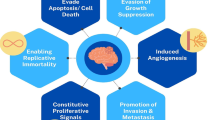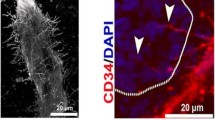Abstract
Purpose
To test whether transglutaminase 2 (TGase 2) inhibitor GK921 alone reverses renal cell carcinoma (RCC) tumor growth. RCC is resistant to both radiation and chemotherapy, and the prognosis remains poor. Despite the recent therapeutic success of vascular endothelial growth factor inhibition in RCC, approximately one-third of RCC patients develop metastatic disease. The expression of TGase 2 is markedly increased in most RCC cell lines, as well as in clinical samples.
Methods
Previously, we introduced the quinoxaline derivative GK13 as a lead compound for TGase 2 inhibitor. The inhibitory effect of GK13 on TGase 2 was improved in GK921 (3-(phenylethynyl)-2-(2-(pyridin-2-yl)ethoxy)pyrido[3,2-b]pyrazine). GK921 efficacy was tested using sulforhodamine in vitro as well as a xenograft tumor models using ACHN and CAKI-1 RCC cells.
Results
GK921 showed cytotoxicity to RCC (average GI50 in eight RCC cell lines: 0.905 μM). A single treatment with GK921 almost completely reduced tumor growth by stabilizing p53 in the ACHN and CAKI-1 preclinical xenograft tumor models.
Conclusion
TGase 2 inhibitor GK921 abrogates RCC growth in xenograft tumor models, suggesting the possibility of a new therapeutic approach to RCC.





Similar content being viewed by others
Abbreviations
- TGase2:
-
Transglutaminase 2
- RCC:
-
Renal cell carcinoma
- SRB:
-
Sulforhodamine B
- I-κBα:
-
NF-κ-B inhibitor α
References
Barrett T, Wilhite SE, Ledoux P, Evangelista C, Kim IF, Tomashevsky M, Marshall KA, Phillippy KH, Sherman PM, Holko M, Yefanov A, Lee H, Zhang N, Robertson CL, Serova N, Davis S, Soboleva A (2013) NCBI GEO: archive for functional genomics data sets-update. Nucl Acids Res 41(Database issue):D991–D995. doi:10.1093/nar/gks1193
Berglind H, Pawitan Y, Kato S, Ishioka C, Soussi T (2008) Analysis of p53 mutation status in human cancer cell lines: a paradigm for cell line cross-contamination. Cancer Biol Ther 7(5):699–708. doi:10.4161/cbt.7.5.5712
Choueiri TK (2011) VEGF inhibitors in metastatic renal cell carcinoma: current therapies and future perspective. Curr Clin Pharmacol 6(3):164–168
Delhase M, Kim SY, Lee H, Naiki-Ito A, Chen Y, Ahn ER, Murata K, Kim SJ, Lautsch N, Kobayashi KS, Shirai T, Karin M, Nakanishi M (2012) TANK-binding kinase 1 (TBK1) controls cell survival through PAI-2/serpinB2 and transglutaminase 2. Proc Natl Acad Sci USA 109(4):E177–E186. doi:10.1073/pnas.1119296109
Gong YD, Lee T (2010) Combinatorial syntheses of five-membered ring heterocycles using carbon disulfide and a solid support. J Comb Chem 12(4):393–409. doi:10.1021/cc100049u
Hainsworth JD, Waterhouse DM, Penley WC, Shipley DL, Thompson DS, Webb CD, Anthony Greco F (2013) Sorafenib and everolimus in advanced clear cell renal carcinoma: a phase I/II trial of the SCRI oncology research consortium. Cancer Invest 31(5):323–329. doi:10.3109/07357907.2013.789900
Han BG, Cho JW, Cho YD, Jeong KC, Kim SY, Lee BI (2010) Crystal structure of human transglutaminase 2 in complex with adenosine triphosphate. Int J Biol Macromol 47(2):190–195. doi:10.1016/j.ijbiomac.2010.04.023
Iismaa SE, Holman S, Wouters MA, Lorand L, Graham RM, Husain A (2003) Evolutionary specialization of a tryptophan indole group for transition-state stabilization by eukaryotic transglutaminases. Proc Natl Acad Sci USA 100(22):12636–12641. doi:10.1073/pnas.1635052100
** X, Stamnaes J, Klock C, DiRaimondo TR, Sollid LM, Khosla C (2011) Activation of extracellular transglutaminase 2 by thioredoxin. J Biol Chem 286(43):37866–37873. doi:10.1074/jbc.M111.287490
Jones J, Otu H, Spentzos D, Kolia S, Inan M, Beecken WD, Fellbaum C, Gu X, Joseph M, Pantuck AJ, Jonas D, Libermann TA (2005) Gene signatures of progression and metastasis in renal cell cancer. Clin Cancer Res 11(16):5730–5739. doi:10.1158/1078-0432.CCR-04-2225
Kim DS, Park SS, Nam BH, Kim IH, Kim SY (2006) Reversal of drug resistance in breast cancer cells by transglutaminase 2 inhibition and nuclear factor-κB inactivation. Cancer Res 66(22):10936–10943. doi:10.1158/0008-5472.CAN-06-1521
Kim DS, Choi YB, Han BG, Park SY, Jeon Y, Kim DH, Ahn ER, Shin JE, Lee BI, Lee H, Hong KM, Kim SY (2011a) Cancer cells promote survival through depletion of the von Hippel–Lindau tumor suppressor by protein crosslinking. Oncogene 30(48):4780–4790. doi:10.1038/onc.2011.183
Kim SJ, Kim KH, Ahn ER, Yoo BC, Kim SY (2011b) Depletion of cathepsin D by transglutaminase 2 through protein cross-linking promotes cell survival. Amino Acids. doi:10.1007/s00726-011-1089-6
Ku BM, Kim DS, Kim KH, Yoo BC, Kim SH, Gong YD, Kim SY (2013) Transglutaminase 2 inhibition found to induce p53 mediated apoptosis in renal cell carcinoma. FASEB J. doi:10.1096/fj.12-224220
Lai TS, Liu Y, Tucker T, Daniel KR, Sane DC, Toone E, Burke JR, Strittmatter WJ, Greenberg CS (2008) Identification of chemical inhibitors to human tissue transglutaminase by screening existing drug libraries. Chem Biol 15(9):969–978. doi:10.1016/j.chembiol.2008.07.015
Lee J, Kim YS, Choi DH, Bang MS, Han TR, Joh TH, Kim SY (2004) Transglutaminase 2 induces nuclear factor-κB activation via a novel pathway in BV-2 microglia. J Biol Chem 279(51):53725–53735. doi:10.1074/jbc.M407627200
Lee SH, Kim N, Kim SJ, Song J, Gong YD, Kim SY (2013) Anti-cancer effect of a quinoxaline derivative GK13 as a transglutaminase 2 inhibitor. J Cancer Res Clin Oncol 139(8):1279–1294. doi:10.1007/s00432-013-1433-1
Lentini A, Tabolacci C, Provenzano B, Rossi S, Beninati S (2010) Phytochemicals and protein-polyamine conjugates by transglutaminase as chemopreventive and chemotherapeutic tools in cancer. Plant Physiol Biochem 48(7):627–633. doi:10.1016/j.plaphy.2010.02.010
Lipworth L, Tarone RE, McLaughlin JK (2006) The epidemiology of renal cell carcinoma. J Urol 176(6 Pt 1):2353–2358. doi:10.1016/j.juro.2006.07.130
Motzer RJ, Hutson TE, Tomczak P, Michaelson MD, Bukowski RM, Rixe O, Oudard S, Negrier S, Szczylik C, Kim ST, Chen I, Bycott PW, Baum CM, Figlin RA (2007) Sunitinib versus interferon α in metastatic renal-cell carcinoma. N Engl J Med 356(2):115–124. doi:10.1056/NEJMoa065044
Motzer RJ, Hutson TE, Cella D, Reeves J, Hawkins R, Guo J, Nathan P, Staehler M, de Souza P, Merchan JR, Boleti E, Fife K, ** J, Jones R, Uemura H, De Giorgi U, Harmenberg U, Wang J, Sternberg CN, Deen K, McCann L, Hackshaw MD, Crescenzo R, Pandite LN, Choueiri TK (2013) Pazopanib versus sunitinib in metastatic renal-cell carcinoma. N Engl J Med 369(8):722–731. doi:10.1056/NEJMoa1303989
Oh W, Lee EW, Sung YH, Yang MR, Ghim J, Lee HW, Song J (2006) Jab1 induces the cytoplasmic localization and degradation of p53 in coordination with Hdm2. J Biol Chem 281(25):17457–17465. doi:10.1074/jbc.M601857200
Pardin C, Gillet SM, Keillor JW (2006) Synthesis and evaluation of peptidic irreversible inhibitors of tissue transglutaminase. Bioorg Med Chem 14(24):8379–8385. doi:10.1016/j.bmc.2006.09.011
Park SS, Kim JM, Kim DS, Kim IH, Kim SY (2006) Transglutaminase 2 mediates polymer formation of I-κBα through C-terminal glutamine cluster. J Biol Chem 281(46):34965–34972. doi:10.1074/jbc.M604150200
Pirrotta MT, Bernardeschi P, Fiorentini G (2011) Targeted-therapy in advanced renal cell carcinoma. Curr Med Chem 18(11):1651–1657. BSP/CMC/E-Pub/2011/111
Rabinovitch RA, Zelefsky MJ, Gaynor JJ, Fuks Z (1994) Patterns of failure following surgical resection of renal cell carcinoma: implications for adjuvant local and systemic therapy. J Clin Oncol 12(1):206–212
Rhodes DR, Yu J, Shanker K, Deshpande N, Varambally R, Ghosh D, Barrette T, Pandey A, Chinnaiyan AM (2004) ONCOMINE: a cancer microarray database and integrated data-mining platform. Neoplasia 6(1):1–6
Siegel M, Khosla C (2007) Transglutaminase 2 inhibitors and their therapeutic role in disease states. Pharmacol Ther 115(2):232–245. doi:10.1016/j.pharmthera.2007.05.003
Siegel M, **a J, Khosla C (2007) Structure-based design of α-amido aldehyde containing gluten peptide analogues as modulators of HLA-DQ2 and transglutaminase 2. Bioorg Med Chem 15(18):6253–6261. doi:10.1016/j.bmc.2007.06.020
Sohn J, Kim TI, Yoon YH, Kim JY, Kim SY (2003) Novel transglutaminase inhibitors reverse the inflammation of allergic conjunctivitis. J Clin Invest 111(1):121–128. doi:10.1172/JCI15937
Stamnaes J, Pinkas DM, Fleckenstein B, Khosla C, Sollid LM (2010) Redox regulation of transglutaminase 2 activity. J Biol Chem 285(33):25402–25409. doi:10.1074/jbc.M109.097162
Suh GY, Ham HS, Lee SH, Choi JC, Koh WJ, Kim SY, Lee J, Han J, Kim HP, Choi AM, Kwon OJ (2006) A peptide with anti-transglutaminase activity decreases lipopolysaccharide-induced lung inflammation in mice. Exp Lung Res 32(1–2):43–53. doi:10.1080/01902140600691514
Yusenko MV, Kuiper RP, Boethe T, Ljungberg B, van Kessel AG, Kovacs G (2009) High-resolution DNA copy number and gene expression analyses distinguish chromophobe renal cell carcinomas and renal oncocytomas. BMC Cancer 9:152. doi:10.1186/1471-2407-9-152
Acknowledgments
The study was supported by a research grant (NCC1410280-1) from the National Cancer Center of Korea to S. Y. K. The study was supported by the National R&D Program for Cancer Control (No. 1020050) of Korea to Y. D. G.
Conflict of interest
The authors declare no conflict of interest.
Ethical standards
The experiments comply with the current laws of Korea.
Author information
Authors and Affiliations
Corresponding authors
Additional information
Bo Mi Ku and Se-** Kim have contributed equally to this work.
This article published in the Journal of Cancer Research and Clinical Oncology, Volume 140, Issue 5, pages 757-767, 10.1007/s00432-014-1623-5, has been retracted at the request of the Editor-in-Chief as it is a duplicate of a paper that has already been published in: Cancer Science & Therapy Volume 5, Issue 10, pages 368-376 10.4172/1948-5956.1000228.
At the time the decision for retraction was made this article appeared to be a duplicate publication. When the authors were informed their withdrawal from a previous publication had not been completed, the duplicate article was immediately removed. Retraction of this article has been rescinded as it is the original version.
Rights and permissions
About this article
Cite this article
Ku, B.M., Kim, SJ., Kim, N. et al. Transglutaminase 2 inhibitor abrogates renal cell carcinoma in xenograft models. J Cancer Res Clin Oncol 140, 757–767 (2014). https://doi.org/10.1007/s00432-014-1623-5
Received:
Accepted:
Published:
Issue Date:
DOI: https://doi.org/10.1007/s00432-014-1623-5




